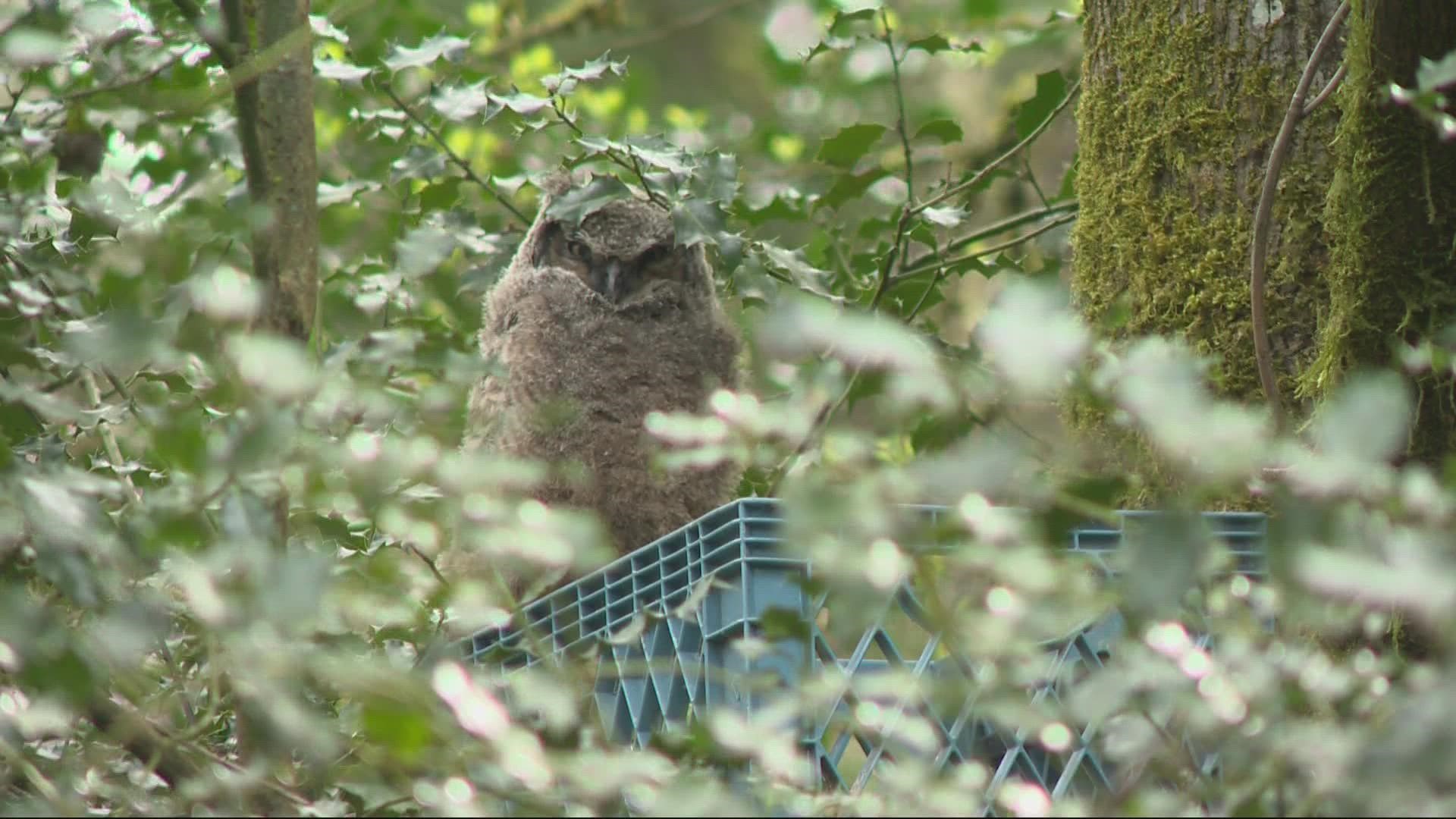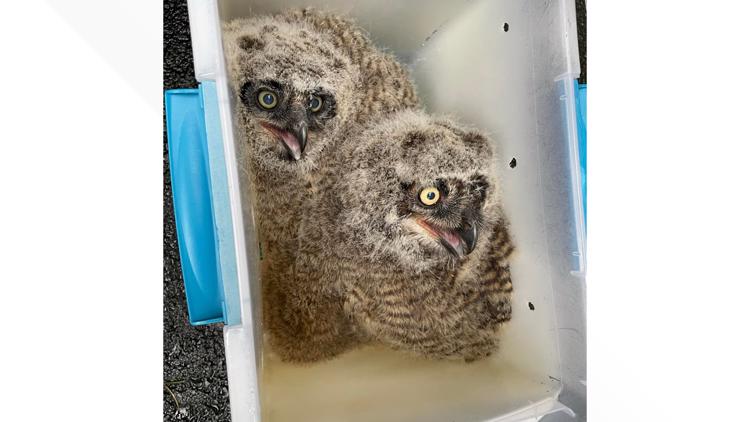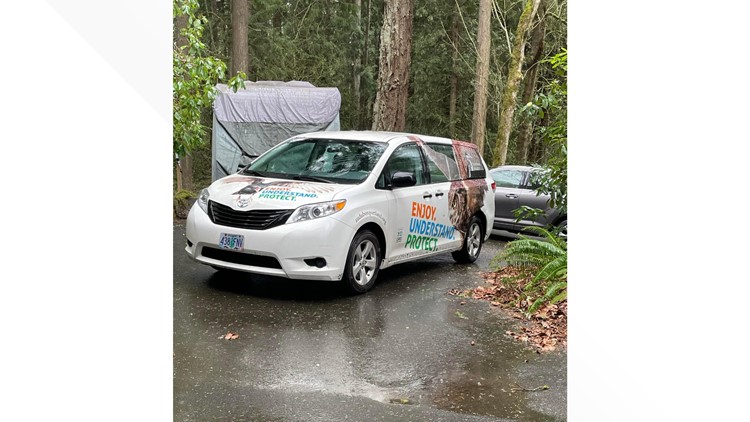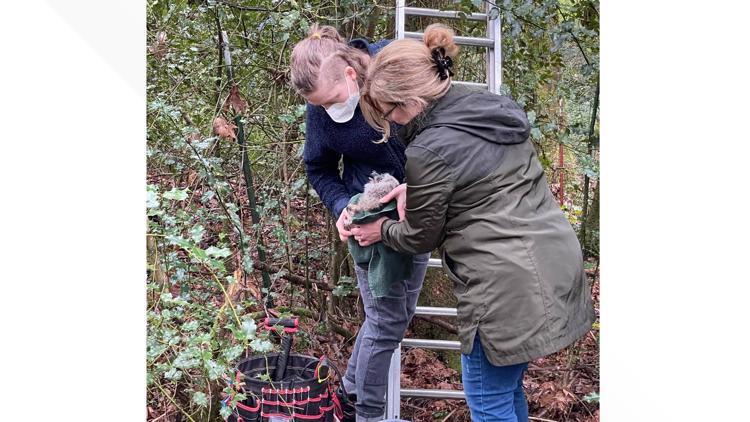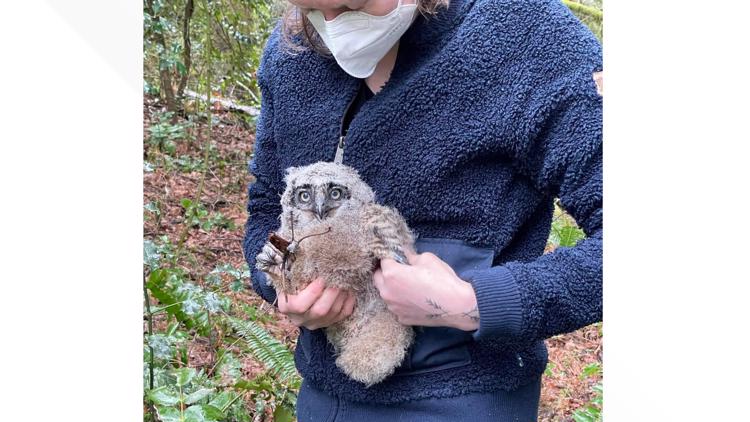PORTLAND, Ore. — Mary Kay Gehring said that she first noticed the owls about three weeks ago. Even living up in the forested hills of West Haven-Sylvan, it's not every day that she gets to see a new family of great horned owls settle in for their own style of domestic bliss.
Little did Gehring know, there'd soon be trouble in paradise — and she'd find herself right in the middle of it.
With binoculars, Gehring could partially see the nest from the third floor of her house. The owl family consisted of two fully-grown parents, and a pair of fluffy little owlets.
"About a week later, I heard a lot of hooting on a Saturday morning," Gehring told KGW. "I looked through my binoculars upstairs to see if I could see what was going on ... and the nest was pretty much gone."
Gehring went out into the yard to investigate. She found one of the owlets on the ground quickly enough, but the other one was nowhere to be found. The parents, meanwhile, were understandably distressed — swooping down through the trees with their talons outstretched.
At first, Gehring gave the owls a wide berth. But from her home she could still see one of the owlets "shuffling off to Buffalo," and she started thinking about the coyotes that roam through the area.
"So I took a milk crate, turned it upside-down over top of it, while the mom was up in the tree just chattering away at me," Gehring said.
Gehring got in touch with the Portland Audubon Wildlife Care Center, and they asked her to bring the owlet in. She obliged, despite being more than a little nervous about getting swooped-upon by the owl mother.
Portland Audubon soon got back to her, telling her that the owlet was still in good health. They wanted to re-nest the baby owl on Gehring's property. In fact, they wanted to use the milk crate as a surrogate nest.
Gehring told the Audubon staff that the other owlet was still missing, but they found it almost immediately. Then, both little owls were hoisted up into the tree in their milk crate nest.
Rehoming owlets
"It was a little nerve-wracking at first — are the parents going to come feed them and take care of them, what's gonna happen?" Gehring said. "And I could actually see it from my bedroom. So I got out my camera and put it on a tripod .. and then I just started, every time I went into the bedroom, zooming in and taking some video."
Gehring started documenting the owlets' progress on social media, and found a more receptive audience than she anticipated.
"I put it on Nextdoor, and the response was pretty overwhelming," Gehring said, still a little baffled.
Though Gehring said she's accustomed to the usual "snipping and complaining and arguing" on a platform like Nextdoor, she's been amazed to find that her documenting of the owls has generated thousands of views and reactions — and all of the feedback has been positive.
"In the divisions of our community and nation, to have something like this pull everybody together ... it's kind of hopeful," said Gehring, "that maybe there is something that we all can look at and all agree on."
The owls have grown quickly — in fact, one of the owlets has already fledged and left the nest. Regardless, Gehring said that fledgling great horned owls will stick around for the next few months, still learning to fly and relying on the parents for food. And even after the young owls move on, Gehring said the parents will likely stick around.

